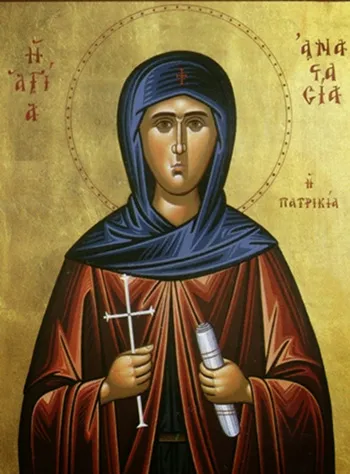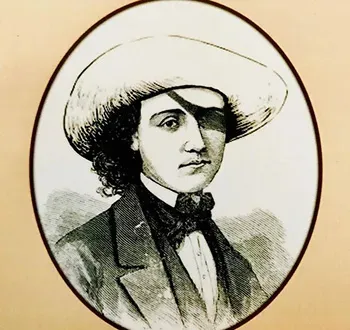As we wrap up our celebration of Transgender Awareness Week, we need to acknowledge what a difficult year it has been for members of the Trans community – especially the youth, who have been targets of the conservative political agenda.
Recently, transphobes have glommed onto the idea that being Transgender is a "fad" or a "trend" that has become popular all of a sudden. Of course, this is not true. Transgender people have existed throughout history and in cultures across continents.
Often, it is hard for historians to pinpoint who in history was Transgender, as the word did not even exist until the 1960s, and many people who identified as LGBTQ+ had to keep their identities hidden. However, there is enough evidence to prove that Transgender people have not only existed throughout history but have shaped, influenced, and bettered societies across the globe. So, here's the lesson your cis history teachers forgot to tell you about.
Two Spirit
For many Indigenous American cultures, gender did not exist on a binary spectrum. While women and men did tend to perform different roles in society and wore different styles of clothes, it was not uncommon for a person to take on the role and dress of another gender. Some people also performed tasks and wore clothing of both genders. In modern days these people are referred to as "Two Spirits."
The term "Two Spirit" was created in 1990 at the Winnipeg Indigenous Lesbian and Gay gathering. Because European colonization destroyed so much Native American culture, the specific language used to describe the Two Spirit people has sadly been forgotten by many tribes.
What modern people do know about the Two Spirit people of the past is that they were spiritually revered in many cases. Being a Two Spirit person was considered the result of spiritual intervention sanctioned by mythology. It was not uncommon for Two Spirit people to fulfill a spiritual role in the tribe, as healers, shamans, or ceremonial leaders.
Non-American Indigenous cultures also recognized a third gender of people. In Polynesian cultures, the word mahu was used to describe someone who was between genders, or gender fluid. Mahu people were respected keepers of cultural and oral traditions and were most often teachers of the hula.
Transgender history through antiquity
As much as Christian Europeans attempted to keep Transgender history out of our textbooks, many accounts have remained. History shows that Transgender people have always been here.
In some of the very earliest accounts of human civilization, around 5,000 BCE, Sumerians described androgynously dressed priests who worshipped the goddess Inanna. These priests, known as the Gala, were tasked with singing "lamenting" hymns to the goddess. In Sumerian culture, singing such songs was typically a role reserved for women, but the Gala tended to be assigned male at birth. However, they often took on female names, and some ancient artwork also depicts them sporting feminine clothing.
Around the eighth century BCE, another European culture had prominent Trans spiritual leaders. The Scythian Empire, which spanned from Bulgaria to western China at its height, was known for transgressing modern ideas of gender. Women were often trained to become powerful warriors. They were so dedicated to defending their homeland that it was thought that they would have their right breast removed in their adolescence to fire a bow more easily. These women warriors were known as "man slayers" in the Scythian language and remained virgins until they had killed a man in battle. While this depiction of gender transgresses modern Western takes on femininity, historians do not consider Scythian women to be "Transgender," because their gender performance at the time aligned with what was culturally expected of a person assigned female at birth.
Despite this, historians do believe the Scythians had a rich culture of Trans women who served as high priestesses and spiritual healers. The Enarei were a group of people assigned male at birth who dressed in traditionally female clothing and performed tasks usually assigned to women. According to the historian Hippocrates, the Enarei spoke with higher-pitched voices and worked as royal healers.
When the Scythian emperor would fall ill, the only rational conclusion was that he had been cursed. He would call for the Enarei to travel to his palace, which was located in modern-day Ukraine, to perform a ritual that would heal his curse. The Enarei were experts at working with natural medicine, and some accounts by Roman scholars even claimed that they used horse urine as estrogen.

Around 527 CE, Saint Anastasia was born in Constantinople. After getting married and later losing their husband at a young age, Anastasia decided to become a nun in the countryside. They founded a monastery outs
The Trans monk of Constantinople
Around 527 CE, Saint Anastasia was born in Constantinople. After getting married and later losing their husband at a young age, Anastasia decided to become a nun in the countryside. They founded a monastery outside the city and were very happy for a short while, until the emperor decided to marry Anastasia. When they learned of this, Anastasia asked their friend Abba Daniel to help disguise them as a man.
For 28 years, Anastasia lived as the monk Anastasius. Upon their death, Abba Daniel referred to Anastasius only as their "brother" and requested that they be buried in his robe. The monks treated Anastasius as one of their own, even after death. Almost a thousand years after their death, Anastasius' remains were moved to sit outside the famed Hagia Sophia.
The Trans conquistador
Trans people, like everyone else, have a complicated relationship with history and can be found as both heroes and villains. Just take Antonio de Erauso, the 17th-century Spanish conquistador, a person of many names, and many crimes.
Assigned female at birth, from a young age, he was sent to live a life of servitude as a nun, but Erauso escaped by dressing as a boy and fleeing to South America to become a soldier.
During his time in South America, Erauso became a fighter, a gambler, a soldier, a colonizer, and a murderer. He served as a soldier in the Spanish army and helped conquer Chile.
Upon his return to Spain, Erauso was outed as Transgender, but he petitioned the Spanish king for a pardon, which he was granted due to his service to the throne. The Pope also granted Erauso permission to continue presenting as a man.
Erauso later published a tell-all memoir of his experiences in South America. This book has become known as one of the first autobiographies of a Trans person.
Erauso used the fame and riches he acquired colonizing the new world, and later writing about it, to move back to South America, where he lived out the rest of his days as a donkey farmer.
The one-eyed wonder of the Wild West
The "Wild West" was a gold mine for LGBTQ+ people looking to escape oppressive gender norms and live more authentically. There are many accounts of Queer and Trans people moving westward and embracing their truth, but perhaps none as interesting as that of "One-Eyed Charley."
Charley Parkhurst was a 12-year-old orphan when he ran away from New England and was taken in by a friendly stagecoach driver. Charley soon learned about the trade and decided to move west to Southern California at the height of the gold rush. As legend has it, Parkhurst lost vision in one of his eyes after being kicked in the face by a stage horse he was shoeing.
Parkhurst gained a reputation as a gentleman, a talented horse trainer, and one of the best stagecoach drivers in the West. He led his team of six horses up and down the California coast, braving some of the most dangerous routes of the day.
Eventually, new technology made Charley's profession obsolete, and he was pushed out of the stagecoach industry in favor of steam engines. This didn't stop him, though. He retired his coach and opened up a saloon.
Charley died at the age of 67 after a battle with tongue cancer. It wasn't until after his death that his friends realized Charley had been Transgender. Still, they used he/him pronouns when memorializing Charley, as did his obituary, which was republished by the New York Times.
Trans people have existed in every corner, every period, and in every culture across the world. While some were accepted, many were not, and their stories have been lost to the ethers of time. However, it is important to remember the rich histories of the Trans community to understand that being Transgender is not a trend or a phase but an identity that has been respected by countless people throughout history. It is important to look to our past as we shape our future and understand that LGBTQ+ identities have always been here, and will always continue to exist.


